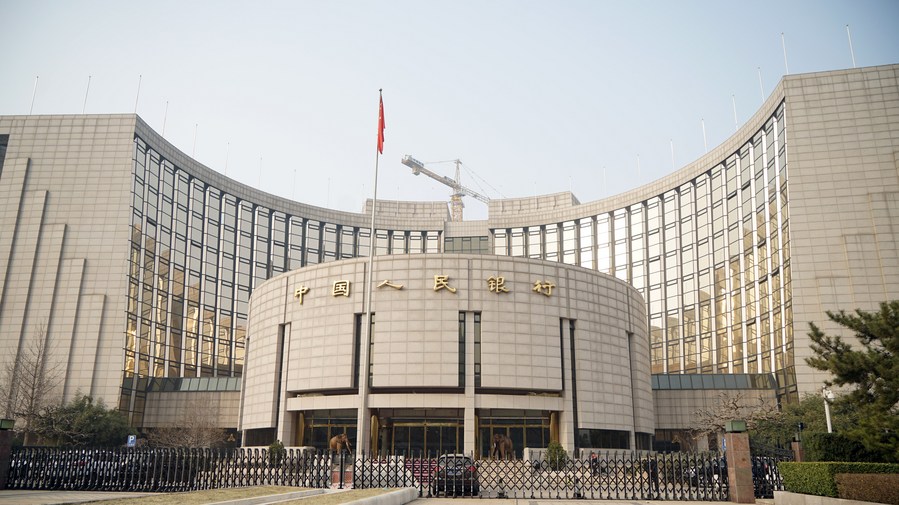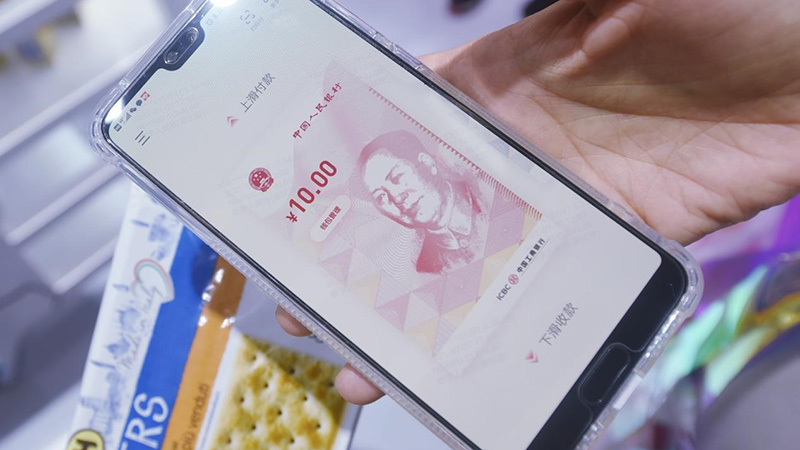Space for PBOC to cut interest rates narrowed

Photo shows the headquarters of the People's Bank of China in Beijing. [Photo/Xinhua]
Yields on China's 10-year bonds fall below those of US Treasuries for 1st time in 12 years
Surging bond yields in the United States have narrowed the space for China to cut interest rates, but reductions in the reserve requirement ratio and targeted liquidity support will remain sensible monetary tools to bolster the Chinese economy, market experts said on Tuesday.
Their comments came after yields on China's 10-year government bonds fell below US Treasury yields for the first time in 12 years on Monday, mainly due to expectations of aggressive tightening by the US Federal Reserve and moderate easing by the People's Bank of China, the nation's central bank.
With 10-year government bond yields seen as a benchmark of asset returns, the inversion in yield spread sparked concerns that China's financial assets could lose some appeal compared with their US counterparts, which in turn could lead to rising capital outflow pressure on China, experts said.
Though interest rate cuts could help alleviate domestic economic downside risks, such moves could intensify capital outflow pressure and weigh on the Chinese yuan by further bringing down Chinese bond yields, they said.
Yang Weiyong, an associate professor of economics at the University of International Business and Economics in Beijing, said the harm caused by cutting interest rates now could outweigh the benefits to the economy.
The move may not only magnify capital outflows but worsen the economic structure by stimulating the property market and sectors with low efficiency, he said.
Instead, Yang said it is sensible for the central bank to further cut the RRR, which will inject more liquidity into the market and facilitate the financing of the real economy.
RRR refers to the proportion of money that lenders must hold as reserves. China last cut the RRR in December by 0.5 percentage point, sending the weighted average RRR to 8.4 percent.
On Monday, 10-year yields of US Treasury bonds rose up to 2.784 percent, while yields of the most-traded Chinese 10-year government bonds stood at 2.75 percent, marking the first inversion in China-US 10-year government bonds since 2010, Reuters reported.
Shao Yu, chief economist at Shanghai-based Orient Securities, said the Fed's aggressive pace of tightening, which could send US interest rates higher by about 1.5 percentage points this year, may sustain the rise in US bond yields and magnify the risks from the China-US bond yield inversion.
"Structural support may therefore prevail in China's monetary moves. In terms of tools that deal with aggregate monetary supply, RRR reductions will be preferable to interest rate cuts, as the latter could directly intensify outflow risks," Shao said.
With supportive measures bolstering credit growth, China's new yuan-denominated loans totaled 8.34 trillion yuan ($1.31 trillion) in the first quarter of 2022, up 663.6 billion yuan compared with the same period of last year, the central bank said on Monday.
Official data also pointed to a rise in capital outflows from China's bond market amid the divergence in China-US monetary policy. Overseas institutions held 3.88 trillion yuan worth of China's interbank bonds by the end of March, down from 3.99 trillion yuan a month earlier, according to the central bank's Shanghai Head Office.
Market analysts said the pressures of capital outflow and yuan depreciation will remain manageable, given that China's real interest rates, which subtract inflation and dictate real investment returns, are still performing at a higher level than counterparts in the US because of mild inflation in China.
Robin Xing, chief China economist at Morgan Stanley, said he expects China to see rising but manageable capital outflow pressure as the country maintains a decent real rate differential with the US.
Resilient export growth thanks to supply chain stability is also expected to underpin the yuan, which may only slightly weaken to 6.40 to the dollar by the end of the year, Xing said.
"The capital outflow pressure facing the Chinese economy is expected to remain controllable as many long-term investors could still scale up their strategic allocation in Chinese financial assets, which will buffer the outflow of short-term speculative money," said Wang Qian, Vanguard's Asia-Pacific chief economist.
Photos
Related Stories
Copyright © 2022 People's Daily Online. All Rights Reserved.










